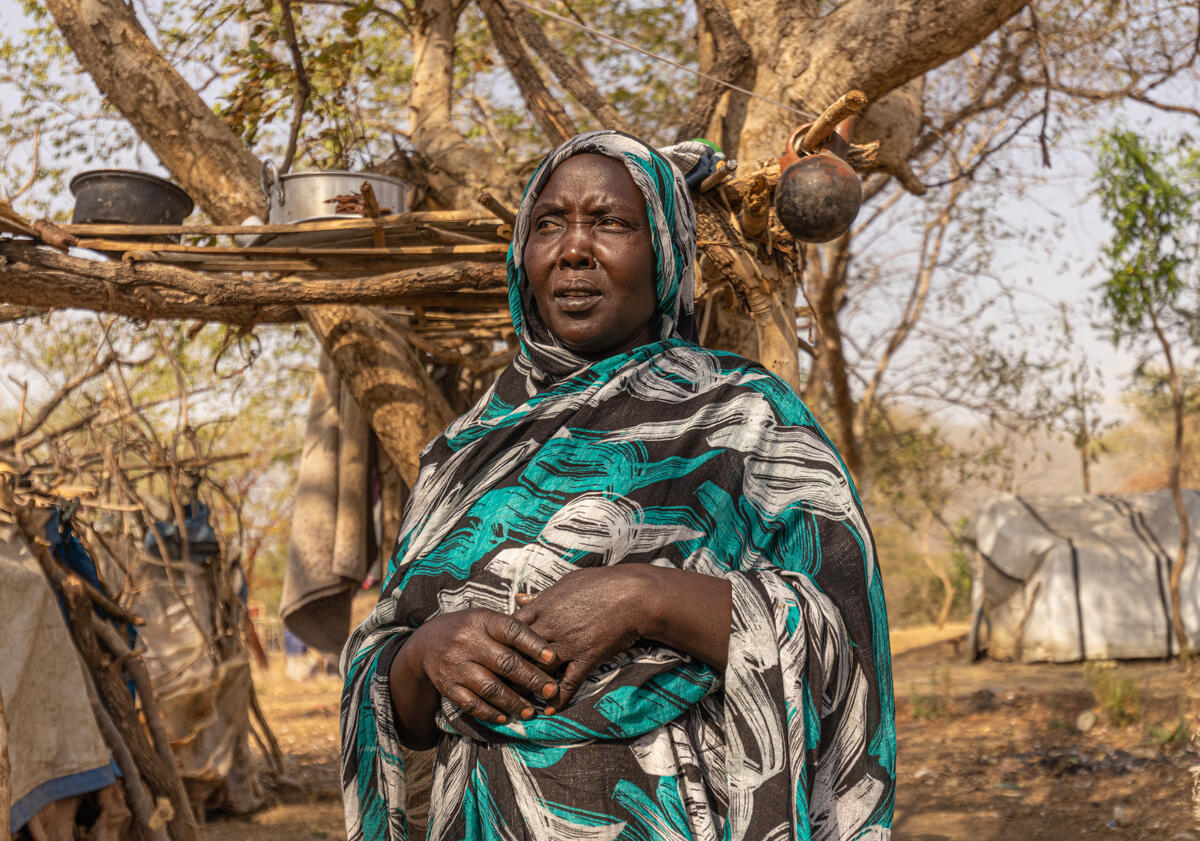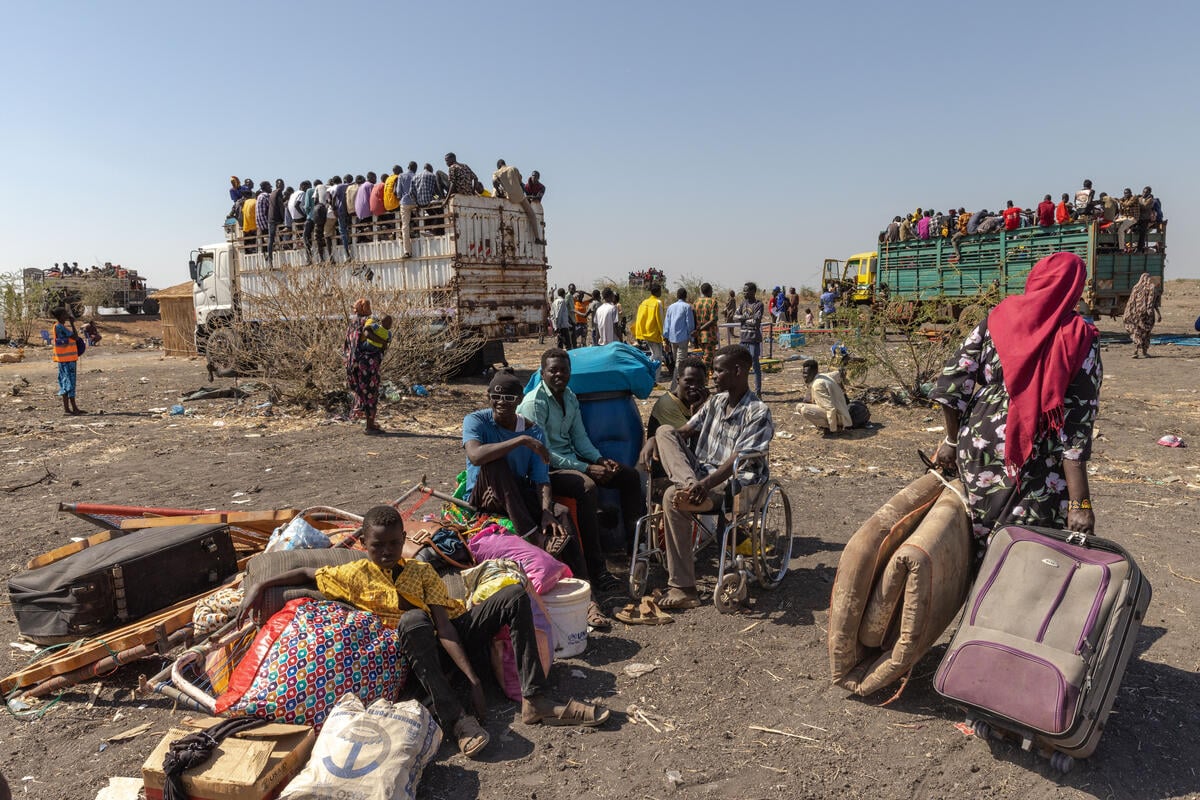Neighbouring countries feeling the strain as Somalia's emergency grows
Neighbouring countries feeling the strain as Somalia's emergency grows

NAIROBI, Kenya, May 3 (UNHCR) - A top-level UNHCR delegation visiting Somali refugee and IDP camps has seen for itself evidence of the growing humanitarian tragedy facing many thousands of uprooted people. The delegation, led by UNHCR's Deputy High Commissioner, T. Alexander Aleinikoff, examined increasingly overcrowded and under resourced situations in sprawling camps in Ethiopia, Djibouti, Kenya and inside Somalia during a two-week visit that has just ended.
Twenty years of violence and anarchy have forced at least two million Somali citizens to flee for their lives. Intense fighting in south-central Somalia is now compelling more people to flee their homes than from any other place in the world. Traumatized and scared, they shelter in safer parts of the country or, if they can make it, escape to the neighboring states of Kenya, Ethiopia, Djibouti and Yemen.
"The burden for these countries is enormous," Mr. Aleinikoff said, noting that government officials he met all expressed growing anxiety about being able to cope with a massive influx of refugees with so many basic needs. Security concerns were repeatedly identified. UNHCR is also gravely concerned and is preparing contingency arrangements and a fund-raising appeal amid fears that the fighting could intensify.
Thousands are expected to cross into Kenya this year, and if the fighting gets worse, there could be many thousands more. Most are likely to arrive in Dadaab, a camp city that already hosts three overcrowded refugee camps housing 270,000 refugees. Although the Kenyan Government has recently approved the extension of a camp, there will still not be sufficient land for the thousands expected to arrive.
Others are expected to cross into Ethiopia. UNHCR's delegation visited two newly opened refugee camps that will house new arrivals and where UNHCR equips refugees with materials to construct their traditional dwellings, tukuls - domed shelters a few meters in diameter that now must house large families.
In Djibouti, a country of first-asylum, refugees arrive after an arduous journey through northern Somalia where a crackdown on smugglers is making the transit even more difficult. The number of new arrivals has more than doubled from last year, and the dry and remote Ali Addeh camp is filled beyond capacity. To cope with the new numbers and relieve the burden at the water-scarce Ali Addeh camp, UNHCR is negotiating with the government to open a new camp.
In all these camps, new Somali arrivals are joining families who have lived in camps for up to 20 years, since the first wave of fighting in the early 1990's drove them from their homes. UNHCR has helped resettle thousands to new countries, mostly to the United States. But these numbers represent a tiny fraction of those stuck in limbo, unable to return home or integrate in the countries where they have sought refuge. "If there was one resounding call from the refugees we met with it was this: please find me a new home," Mr. Aleinikoff said.
For those living for long periods in the camp education is among the most wanted of services. In Dadaab camps, primary and secondary classrooms are packed with as many as 100 pupils each. Yet only half the children are estimated to be attending. At Ali Addeh in Djibouti, schooling is offered only up to Grade 8 (normally, for 13-14 year olds) because of gaps in funding. "Hope is expensive," Alison Oman of UNHCR said, "These people have been warehoused. They need the vocational skills so when they go home to Somalia they can be the doctors, the engineers, the teachers of the future."
During a visit to Bossaso, a port city in the Northern Somali State of Puntland, the delegation witnessed especially precarious conditions for internally displaced persons (IDPs). On dusty vacant land on the edge of the city, more than 60,000 Somalis, mostly women and children, are struggling in makeshift IDP settlements of UNHCR tents or in crude structures of cardboard and cloth. Fires break out often, and food is scarce.
UNHCR, UNICEF, WFP and other partners are offering some assistance, but because of resource and security constraints, the aid is minimal. Some IDP women manage to earn money collecting garbage in Bossaso or working in local households, and some of the men find manual labor at the port. UNHCR income-generating projects are helping too. But most people live in deep poverty. There is almost no medical care in the settlements. Only a small percentage of the children attend school.
"If the fighting stops, we will all go back," an elder at the Bossaso IDP camp said.
By Melissa Fleming in Nairobi, Kenya








